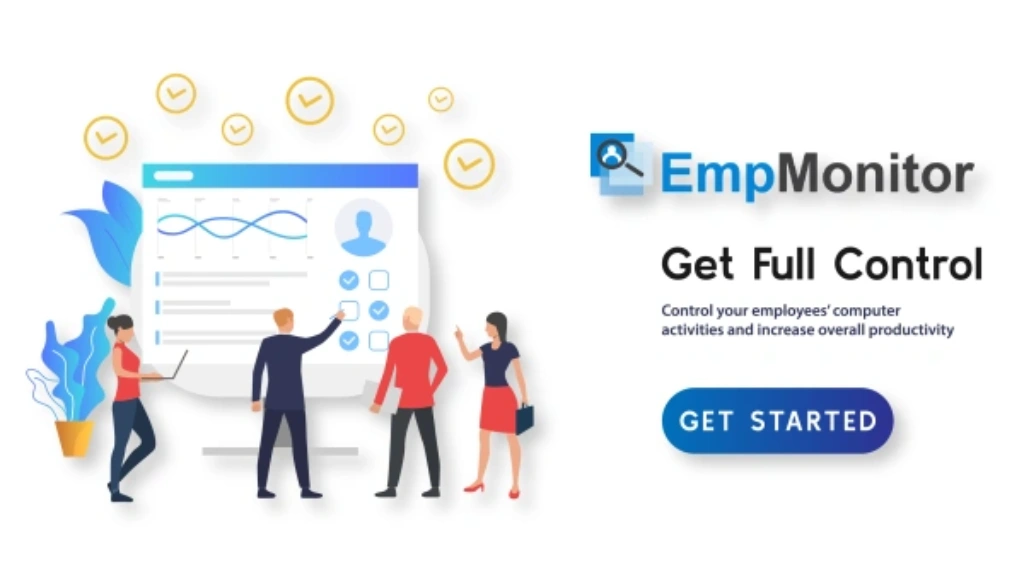Many industries run 24/7 to meet growing demands. To make this possible, businesses organize employees into different shifts. Among these, the first shift remains the most common and preferred by many workers. So, what is first shift exactly?
Simply put, it’s a traditional work schedule that starts in the morning and ends in the afternoon, aligning with standard business hours.
This schedule allows employees to work during the day and enjoy evenings for personal time. Understanding what is first shift involves learning how it affects your lifestyle and career trajectory.
Whether you’re exploring new job opportunities or considering a schedule change, learning about what is first shift will help you make informed decisions.
Listen Podcast Now!
Understanding First Shift:
The first shift, often called the day shift, represents the standard work schedule most people associate with full-time jobs.
When people ask “What is first shift?”, they’re referring to this schedule, which serves as the backbone of most business operations.
It’s the traditional working pattern that allows employees to maintain consistent daytime routines.
The concept of what is first shift dates back to the Industrial Revolution, when factories structured schedules around daylight hours to maximize productivity.
In most industries, first shift hours typically start between 6:00 AM and 9:00 AM and end between 2:00 PM and 6:00 PM.
What time is first shift varies by company, but the most common variation is the 9-to-5 schedule, though many companies adjust to 8:00 AM to 5:00 PM or 7:00 AM to 4:00 PM.
Today, understanding what is first shift goes beyond knowing the hours. It’s about recognizing how this schedule supports work-life balance, productivity, and customer engagement.
Businesses rely on first shift workers to handle daily operations, client interactions, and administrative tasks that keep organizations running smoothly.
First Shift Hours and Variations:
The exact timing of what is first shift varies widely depending on industry and company size.
Generally, what is considered first shift refers to the daytime schedule when most businesses run at full capacity.
In healthcare settings, what is first shift often starts as early as 6:00 AM to ensure smooth handovers from night staff.
Manufacturing plants typically begin around 7:00 AM, while corporate offices usually follow the traditional 9:00 AM to 5:00 PM workday.
Understanding what hours is first shift requires looking at specific industry standards.
Common variations include 6:00 AM to 3:00 PM in hospitals, 8:00 AM to 4:30 PM in offices, or 7:30 AM to 4:30 PM in manufacturing.
Some companies offer compressed what is first work Shift Schedules with four-day workweeks, where employees work 10-hour shifts.
Retail businesses often set first shift hours between 8:00 AM and 5:00 PM, while educational institutions typically run from 7:30 AM to 4:00 PM.
In essence, while what is first shift hours may differ from one workplace to another, the purpose remains constant: to cover daytime operations when productivity and collaboration peak.
Benefits of Working First Shift:
When you understand what is first shift, it becomes clear why professionals prefer this schedule.
Aligned with Natural Energy Levels:
Humans are naturally wired to be more alert during the day. Working what is first shift aligns with circadian rhythms, helping employees maintain consistent energy and focus throughout the day.
This enhances productivity and makes routines more sustainable, reducing fatigue and burnout significantly.
Better Work-Life Balance:
One of the biggest advantages of understanding what is first shift is how easily it integrates with family life.
Employees can spend evenings with loved ones, attend family dinners, or help children with homework.
Couples working traditional schedules find it easier to coordinate plans and maintain quality time together. First shift work supports healthier, more consistent work-life balance.
Greater Career Growth Opportunities:
Working what is first shift opens doors to professional development opportunities.
Since most companies operate during the day, first shift employees have direct access to management, team meetings, and training programs.
They’re more likely to participate in networking events and company projects that contribute to promotions and career growth.
Improved Social and Personal Life:
First shift workers enjoy more freedom in evenings to maintain active social lives.
Whether going to the gym, meeting friends, or attending community events, first shift schedules make participation easier.
Weekends remain free and predictable, supporting better planning for recreation and personal commitments.
Positive Impact on Health and Well-Being:
Maintaining a regular sleep schedule is essential for physical and mental health. Working during the day supports consistent nighttime rest.
First shift workers have better access to healthcare providers operating during daytime hours.
Reduced stress, improved mood, and better sleep quality contribute to healthier lifestyles, making what is first shift often considered the ideal work schedule.
Drawbacks and Challenges:
While what is first shift offers advantages, potential challenges deserve consideration. One of the most noticeable is the daily commute.
First shift workers often face peak-hour traffic, resulting in longer travel times, higher transportation costs, and increased stress before work begins.
Competition for first shift positions is another challenge. Since most people prefer daytime schedules, these roles receive high numbers of applicants, making them difficult to secure.
This demand can reduce negotiation power for salary and benefits.
Scheduling flexibility is limited with first shift hours, making it harder to manage appointments, childcare, or errands during standard business hours. Workers may need vacation days for routine matters. Additionally, daytime services like parking and childcare often come at premium costs.
First shift roles sometimes come with expectations to attend early meetings, participate in late conference calls, or stay for overtime, extending the workday beyond scheduled hours.
Industry-Specific Considerations:
The experience of working what is first shift varies greatly depending on the industry.
1. Healthcare:
The first shift coincides with the busiest patient care periods. While stressful due to fast pace and high stakes, it offers healthcare workers more opportunities for professional interaction and skill development.
2. Manufacturing:
First shift employees benefit from better supervision, maintenance support, and easier communication with management. However, workers may face higher production targets and stricter oversight.
3. Corporate Environments:
The first shift aligns with standard business hours, making it easier to schedule meetings and collaborate. However, global client interactions or tight deadlines can extend the workday.
4. Retail:
First shift employees work during peak customer hours. While demanding, it offers opportunities for sales incentives and relationship building.
Maximizing First Shift Success:
1. Establish a Consistent Morning Routine:
Prepare work materials and meals the night before to reduce morning stress.
Plan your commute accounting for traffic and maintain a regular sleep schedule to feel energized throughout the day. This is essential for sustained productivity and focus.
2. Use Time Management Tools:
Leverage digital planners, calendars, and task management apps to organize daily responsibilities efficiently.
A quality time tracking tool or time management software helps allocate hours effectively throughout the day.
Set reminders for meetings and deadlines to stay on track. Using a time tracker helps monitor how you spend your hours and identify improvement areas.
By scheduling both work and personal tasks strategically, you maintain healthy work-life balance.
3. Prioritize Professional Development:
Take advantage of first shift hours to attend training programs and networking events that happen during standard business hours.
Engage with supervisors and colleagues while decision-makers are present, improving visibility and relationship-building.
Focus on acquiring new skills or certifications that boost career growth and long-term opportunities.
4. Maintain Health and Well-being:
Follow regular meal times aligned with your shift to maintain energy and focus. Incorporate exercise into your daily routine, whether morning jogs or gym sessions.
Practice stress management techniques like meditation and deep breathing to reduce burnout and maintain mental clarity.
5. Plan for Productivity and Balance:
Combine structured routines, effective time management, and healthy habits to maximize work performance.
Focus on both efficiency and well-being, ensuring your first shift schedule supports long-term success and personal fulfillment.
Also Read:
Shift Schedules: How To Create, Types, & Advantages In 2025
How To Create An Effective Work Schedule In 2025: 09 Easy Steps
EmpMonitor: Enhancing First Shift Productivity:
First shift employees and managers benefit greatly from productivity tools like EmpMonitor, which offers features tailored to first shift operations.
1. Real-Time Productivity Tracking:
EmpMonitor tracks work habits in real time, helping first shift workers recognize when they’re most productive and identify efficiency improvements. This real-time monitoring enables workers to make adjustments throughout the day for better performance.
2. Application Monitoring:
By tracking app and website usage during work hours, managers ensure focus stays on priority tasks and reduce distractions. This helps identify time wasters and productivity blockers that affect first shift performance.
3. Accurate Time Tracking:
EmpMonitor’s time tracking feature helps allocate time to different tasks precisely. This is especially helpful for roles juggling multiple responsibilities or projects with tight deadlines. Employees can see exactly where their time goes each day.
4. Better Project Planning:
Detailed time records help estimate project durations accurately and plan workloads effectively. Managers can ensure correct billing for client work and optimize resource allocation across first shift teams.
5. Screenshots and Recording:
Optional features add accountability and security for operations dealing with sensitive data or customer interactions. This protects both employees and the organization during critical first shift hours.
6. Comprehensive Reports:
Managers receive detailed reports on team productivity to spot training needs and workflow bottlenecks. These insights help identify areas where resources should be reallocated for maximum efficiency.
7. Seamless Integration:
EmpMonitor integrates smoothly with existing business tools, ensuring minimal disruption while enhancing productivity tracking during critical first shift hours.
FAQ’s:
Q1: Can first shift hours vary within the same company?
A: Yes, different departments may have varying first shift schedules based on operational needs. Customer service might start at 8:00 AM while accounting begins at 9:00 AM, but both are considered what is first shift.
Q2: Do first shift workers earn more?
A: First shift positions often offer higher base salaries but typically don’t include shift differentials. Second and third shift workers may receive additional pay for less desirable hours.
Q3: How do I transition from second or third shift?
A: Gradual adjustment over 1-2 weeks works best. Start going to bed and waking 30 minutes earlier each day until reaching your target schedule. Maintain consistent sleep patterns even on weekends.
Q4: Are first shift positions more competitive?
A: Generally, yes, because most people prefer daytime schedules. This competition makes what is first shift positions harder to obtain, but may indicate better working conditions and opportunities.
Q5: What industries offer the most first shift opportunities?
A: Corporate offices, healthcare, education, banking, government, and professional services operate primarily on what is first shift schedule, offering numerous daytime opportunities for workers.
Conclusion:
Understanding what is first shift is essential for making informed career choices. First shift roles align with natural circadian rhythms, support family life, and foster professional growth.
While challenges like traffic and competition exist, effective time management can maximize benefits.
Success depends on understanding industry requirements, building strong productivity habits, and maintaining work-life balance. For organizations, modern monitoring tools enhance efficiency and growth opportunities.
Ultimately, what is first shift can suit various lifestyles, offering stability, career advancement, and personal fulfillment.
By carefully evaluating your goals and circumstances, you can determine if what is first shift work is the right path for long-term success and satisfaction in your professional career.

















